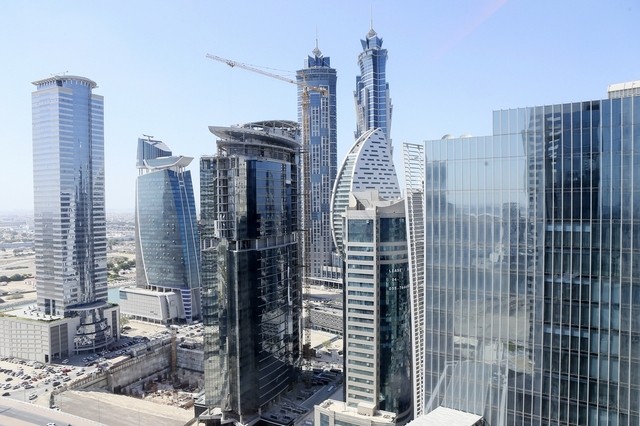
Business Bay is becoming the new destination in Dubai for cut-price office space as falling land prices in the area contribute towards a glut of new supply, says a new report from Cluttons, the property consultancy.
Faisal Durrani, Cluttons’ global head of research, yesterday said a lack of new stock or greenfield land on which to build has pushed up rents in areas such as Bur Dubai, Deira and Garhoud. But falling land prices in Business Bay are encouraging the launch of more projects in the area, placing further pressure on rents.
“Land values at Business Bay have come down slightly to about Dh225 to Dh350 per square foot. All of a sudden what that means is the viability of some projects that had previously stalled has now improved significantly,” said Mr Durrani.
He said the base price for rents in areas such as Garhoud was currently about Dh110 per sq ft, while rents in Business Bay had dropped to a base price of Dh70 per sq ft.
“Business Bay is starting to be seen as an alternative to Deira, Bur Dubai and Garhoud, which obviously have congestion issues,” said Mr Durrani. “There are occupiers who need to be in those locations for various reasons, but when you have a cheaper alternative that is in a more central location, it does present quite an attractive alternative.”
Another area where rents have come under pressure is Jumeirah Lakes Towers (JLT). Mazaya Business Avenue, a recently completed three-tower complex, is offering fully inclusive rents of between Dh60 and Dh70 per sq ft, compared to a district average of between Dh70 and Dh180 per sq ft.
“That’s challenging rents across JLT. SMEs looking for free-zone space in DMCC [Dubai Multi Commodities Centre] have a significantly cheaper alternative,” said Mr Durrani.
Overall rents across Dubai remained flat at Dh250 per sq ft for primary space, Dh130 per sq ft for secondary space, and Dh70 per sq ft for tertiary space.
Demand for warehouses has also slowed dramatically, but remains in positive territory at about 2 to 5 per cent, compared to increases of 40 to 50 per cent in select locations last year.
“That level of rental growth was never going to be sustainable and things had to plateau,” said Mr Durrani. “Demand is still probably slightly ahead of supply in most of the industrial sub-markets across the city.”
According to Mr Durrani, one area which is hugely popular is Dubai South, where occupiers “are conscious of the fact that something special is being created there and everybody is trying to have first-mover advantage to get the best site”.
“We all know how important the aviation sector is to Dubai’s economy and the government is trying to grow that further,” he said. “It is going to be a significant location for the city and there isn’t anything like it in the world.”
Speaking at the inaugural Aviation Investment Summit in Dubai last week, Tahnoon Saif, Dubai South’s vice president of aviation, said the duty-free routes that would be in place between Dubai South and Jebel Ali’s port and free zone would offer investors “a seamless movement of goods between the two zones”.
Mr Saif said the aviation industry’s share of contribution to Dubai’s economy was set to grow to 32 per cent in 2020, from 28 per cent in 2010. The number of people working in the sector is also set to grow by 113,000 to 372,000.
 Comments ( 0 )
Comments ( 0 )
 Post a Comment
Post a Comment